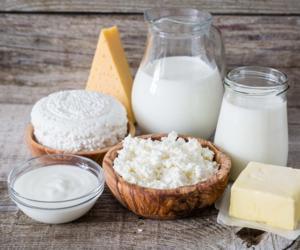What is a Lactose Intolerance Diet?

Lactose (milk sugar) intolerance occurs when lactose in the small intestine becomes indigestible. Milk comprises of lactose as its major carbohydrate (sugar). Lactose is also found in dairy products such as yogurt, ice cream, butter and soft cheeses.
Causes of Lactose Intolerance
Lactase is used in the digestion of lactose by the body. It decomposes lactose into glucose and galactose sugars, which are easily absorbable into the bloodstream. Lactose intolerance victims have a deficiency in lactase production, leading to fermentation of lactose by bacteria in the digestive system. As a result, several gases which lead to lactose intolerance symptoms are produced.
Lactose intolerance can either be permanent or temporary, depending on the causes of lactose production deficiency by the body. Mostly, the condition in adults is genetically transmitted and permanent. However, in young children, the illness is as a result of a digestive system infection and it can take just a few weeks for the condition to disappear.
Dietary Remedy
Initially, foods with high lactose content should be avoided. Foods with a low lactose content may be introduced again if the symptoms disappear. However, the symptoms should be monitored. The majority of people can identify their lactose tolerance levels. Nevertheless, they are rarely careful in realizing the need to avoid foods with low lactose contents, such as biscuits, cakes and among others. It is paramount to get an appropriate substitute for any excluded vital food in the diet.
Dairy Foods' Lactose Levels
Dairy foods and their respective serving sizes for consumption have various lactose contents. The following table shows the amount of lactose in average dairy food serving sizes. Dairy products like hard cheese have low levels of lactose, and thus are usually tolerated. Due to pre-digestion by its bacteria, some people may tolerate yogurt.
Note This Before You Exclude All Dairy Products
Lactose intolerance and a milk allergy are different in the essence that the latter is a more serious issue that is less common.
Experts assert that most lactose intolerance victims can accommodate different lactose amounts. The AAP (American Academy of Pediatrics) recommends the inclusion of some lower lactose content dairy products (especially cheese and yogurt) in the diet for children with mild lactose intolerance. A recent study also indicates that if people with lactose tolerance drink small quantities of milk, they will be able to recover from the condition after some time. The milk slowly changes the bacteria in their intestines, making lactose easily digestible.
The lactose tolerance level in an individual is established by trial and error. However, almost all people, whether suffering from lactose intolerance or not, should regulate the consumption of dairy proteins. This will help in avoiding symptoms like diarrhea, gas and stomachache.
You can regulate dairy products in your diet by:
- Dividing and conquering: Divide your dairy lactose consumption into servings of 4 ounces to 8 ounces and spread them throughout the day.
- Making it a meal component: Solid food increases the time for bowel production. Thus the breakdown of lactose by lactase takes longer. For instance, you can drink a small glass of milk alongside a complete lunch.
- Taking lactase tablets or milk with pre-digested lactose: Lactase tablets - which are over-the-counter drugs - assist in lactose digestion. Gastroenterologist Paul Choi, MD, who is a director of the Los Angeles Endoscopy Center and an American Gastroenterological Association member, says that taking lactase pills around 30 minutes before consuming dairy manages most lactose intolerance symptoms. Alternatively, you can drink a milk brand like Lactaid, which consists of pre-digested lactose
- Drinking yogurt. Yogurt with live and active cultures has a low lactose content and may not have negative effects on you. Due to pre-digested lactose and bacterial cultures in it, yogurt is an appropriate food for most lactose intolerance victims.











